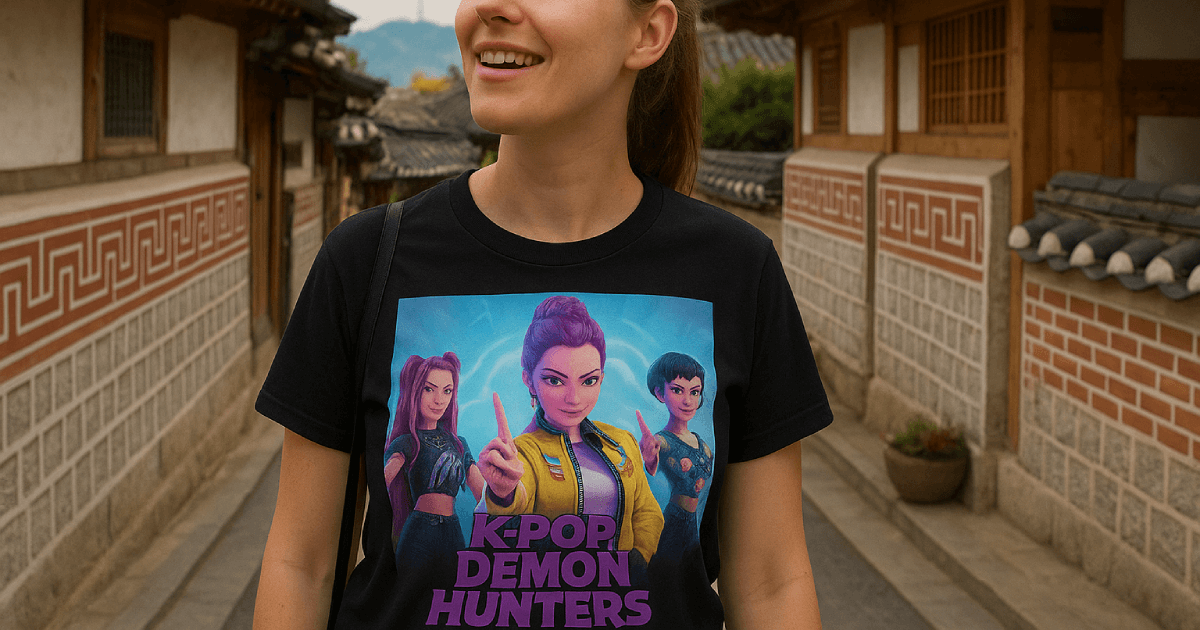When Kpop Demon Hunters hit Netflix in 2025, it quickly became more than just an animated film—it became a cultural phenomenon. Blending the vibrant world of K-pop with the mystical depth of Korean folklore, the movie captured the imagination of viewers worldwide.
But beyond the flashy dance numbers and thrilling demon battles, Kpop Demon Hunters hides something deeper: an introduction to Korea’s rich traditions, myths, and cultural symbols.
For travelers planning a trip to Korea, this movie can be more than entertainment—it can serve as a fun guidebook to explore cultural secrets that many first-time visitors might miss. Here are five cultural elements from the movie that every traveler should know before visiting Korea.
Table of Contents
1. Korean Shamanism and Folklore
One of the strongest elements in Kpop Demon Hunters is its inspiration from Korean shamanism (musok) and ancient folklore. The grim reaper-like figure jeoseung-saja and evil spirits in the movie echo Korea’s traditional tales of life, death, and the afterlife.
The Grim Reaper(저승사자, Jeoseungsaja) in Korea is not simply a terrifying figure. In traditional beliefs, Jeoseungsaja is considered a neutral messenger who guides souls to the afterlife. Unlike Western portrayals of death as something purely dark and evil, the Korean Grim Reaper is often shown with solemn dignity and even compassion, reminding people of the balance between life and death. Modern Korean dramas like Goblin (도깨비, Dokkaebi) and movies often portray these characters as complex, sometimes even sympathetic beings.
The Goblin, or Dokkaebi, is another uniquely Korean figure. Rather than being purely evil, Dokkaebi are mischievous tricksters with magical powers. They can punish the greedy or selfish, while rewarding the kind-hearted. This duality makes them beloved figures in Korean legends. Today, tourists can spot Dokkaebi imagery in Korean folk art, museums, and even themed cafés, making it a fun cultural link between myth and modern life.
For travelers, understanding these beings adds a deeper layer of meaning when exploring Korea. Visiting traditional folk villages, exploring themed exhibitions, or even watching K-dramas inspired by these myths becomes much more rewarding when you know the cultural background behind Grim Reapers and Goblins.
For travelers, this offers a chance to explore:
- Shamanic rituals (gut): These are still practiced in some regions, offering a unique cultural window.
- Folk museums: Places like the National Folk Museum in Seoul showcase traditional myths, rituals, and tools used by shamans.
👉 Watching the film first will help travelers recognize these motifs when they encounter them in real life.
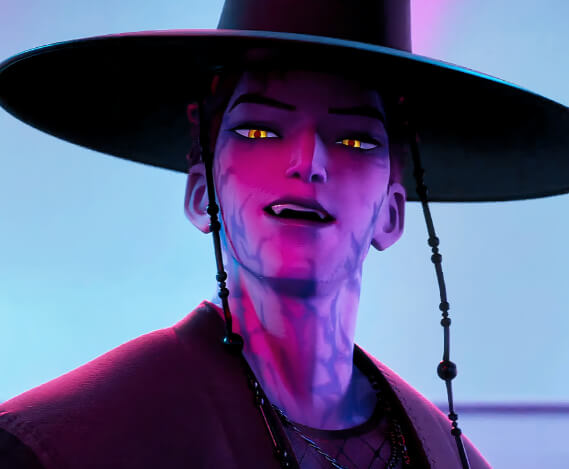
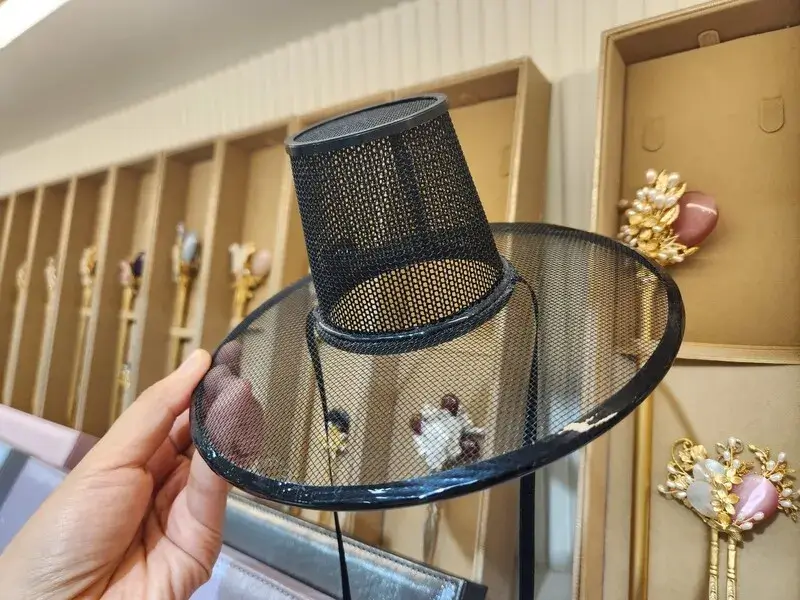
Vinotdang, a traditional goods shop located inside Gwangjang Market in Jongno-gu, Seoul, sells traditional Korean hats (gat). Reporter Park Go-eun
2. Traditional Weapons and Protective Symbols
Throughout the movie, the heroines wield mystical weapons and talismans to fight demons. Among them, one stands out: the sain-geom (四寅劍), or “Four Tigers Sword.”
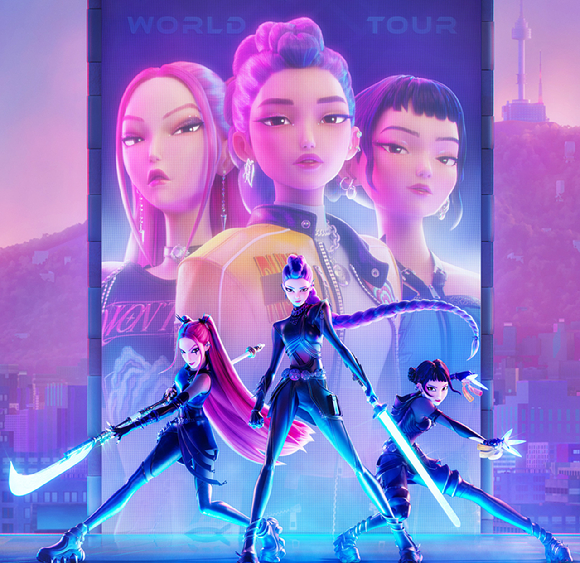
What is the Sain-geom?
The sain-geom is a legendary Korean sword said to be forged under specific astrological signs. According to tradition, it was created during the four “in” (寅, tiger) times of the day, symbolizing ultimate spiritual strength. This sword was not used for ordinary battle but for ritual protection, often by shamans or kings to ward off evil.
How the Movie Uses It
In Kpop Demon Hunters, the sain-geom is reimagined as a glowing, supernatural weapon that channels both music and spiritual energy. By linking it with the idols’ performances, the film symbolizes how art and tradition together can defeat inner and outer demons.
Where Travelers Can See Similar Objects
Heritage villages (like Andong Hahoe Village): Often display protective talismans and ritual objects.
National Museum of Korea (Seoul): Houses ancient swords, armor, and shamanic artifacts.
Where travelers can see them:
- Museums: The National Museum of Korea displays ancient weapons and artifacts.
- Cultural villages: Some heritage villages feature exhibitions of talismans and traditional crafts.
These items are not just props; they symbolize Korea’s age-old fight between good and evil, light and darkness.
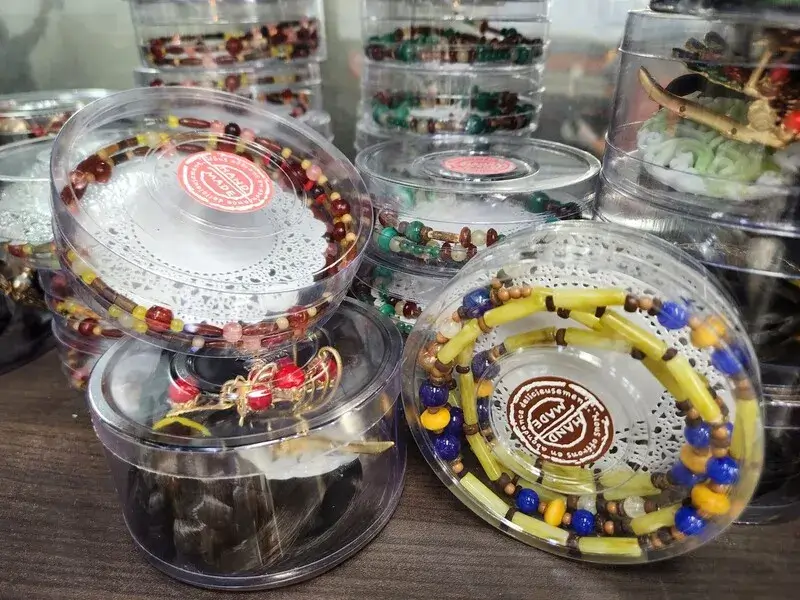
Source: https://www.hani.co.kr/arti/society/society_general/1214293.html
Daesin Kkotshin, a traditional accessories shop located inside Gwangjang Market in Jongno-gu, Seoul, sells hat strings (gatkkeun). With the popularity of the ‘Lion Boys’ hats featured in Kpop Demon Hunters, sales of hat strings have also increased. Reporter Park Go-eun
3. Hanbok and the Fusion of Fashion
One of the most eye-catching elements in the film is how the characters’ stage costumes blend modern K-pop fashion with traditional hanbok designs. Flowing sleeves, bold colors, and ornate accessories pay homage to Korea’s attire while keeping a stylish, idol-ready look.
Experience It in Real Life
Travelers can directly try this fusion by renting or purchasing hanbok. Popular options include:
- Oneday Hanbok (Seoul) → https://www.onedayhanbok.com/
- Hanboknam (Seoul & Jeonju) → https://www.hanboknam.com/
- Hanbok Rental → https://maps.app.goo.gl/oKijaeEZjYatyZY68
Hanbok Photo Tips
- Visit in the morning → Palaces are less crowded, giving you clearer, postcard-like photos.
- Mix traditional and modern styles → Many shops now offer hanbok with lace, pastel fabrics, or shorter skirts, perfect for both historical and trendy looks.
By wearing hanbok at palaces like Gyeongbokgung or Changdeokgung, travelers can step into the very aesthetic that inspired the film’s costumes.
4. K-Pop Stardom and Idol Culture

At its core, Kpop Demon Hunters is about a fictional idol group balancing fame with a secret demon-hunting life. This mirrors Korea’s real idol training system—though with fewer supernatural battles.
Here’s a side-by-side comparison:
| Aspect | Kpop Demon Hunters Group | Real Korean Idol Groups |
|---|---|---|
| Training | Harsh vocal/dance training + secret demon combat training | Rigorous years-long training in singing, dancing, languages |
| Image | Stylish fusion of hanbok & futuristic outfits | Trend-driven, concept-based styling |
| Fan Culture | Fans cheer both performances and battles against evil | Fans support idols through concerts, albums, fan meetings |
| Secret Life | Double life as performers and demon hunters | Double life mostly as idols vs. private individuals |
| Symbolism | Music as both entertainment and weapon of light | Music as cultural export and fan connection |
Travelers curious about idol culture can:
Visit HYBE Insight Museum (Seoul) to explore BTS and HYBE artists’ history.
Tour SM Entertainment’s Culture Complex (SMTOWN).
Explore Myeongdong’s K-pop streets for albums, photo cards, and fan merch.
5. Sacred Sites and Mythical Landscapes
Finally, the backdrop of Kpop Demon Hunters is filled with temples, mountains, and mystical cityscapes that echo real places in Korea. The fiThe backdrop of Kpop Demon Hunters features temples, mountains, mystical cityscapes, and even traditional medicine shops. Many are inspired by real places that travelers can visit.
Famous Landmarks from the Film
- Bukhansan National Park: Its jagged peaks echo the film’s battle scenes.
- Jogyesa Temple (Seoul): A spiritual center that resembles the temple where the heroines seek guidance.
- Yongin Korean Folk Village: Replicates old streets and rituals, much like the movie’s cultural backdrops.
Traditional Medicine in the Film
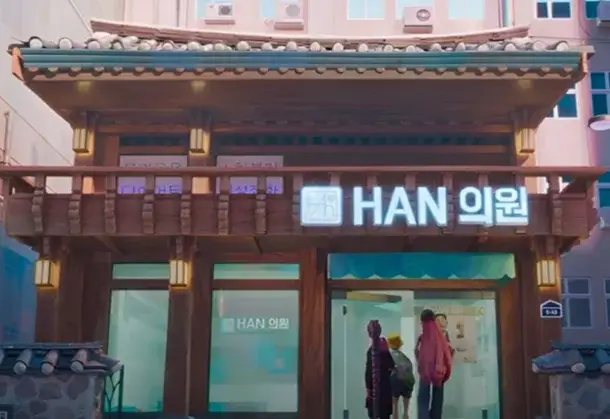
In one scene, the characters visit a hanuiwon (한의원, Korean traditional clinic) and a street resembling Jegi-dong Herbal Medicine Market in Seoul.
- In Korea, a hanuiwon is not mystical but a respected medical institution where doctors prescribe herbal remedies, acupuncture, and cupping therapy.
- Jegi-dong is famous for its long rows of shops selling ginseng, dried herbs, and roots—many locals still visit to strengthen their health.
Food and Culture Near These Spots
- Samgyetang (ginseng chicken soup): A nourishing dish tied to Korean medicine.
- Temple food (balwoo gongyang): Vegetarian meals served in some temples, emphasizing mindfulness.
- Street snacks in Insadong: Hotteok (sweet pancakes), yakgwa (honey cookies)—similar to foods shown in the film’s festival scenes.
By visiting these sacred and cultural sites, travelers can step directly into the magical landscapes that inspired Kpop Demon Hunters.
Conclusion
Kpop Demon Hunters is more than a Netflix success—it’s a gateway to discovering the depth of Korean culture. From shamanism and folklore to hanbok, K-pop, and sacred landscapes, the movie offers a cultural road map that travelers can bring with them on their journey.
So next time you visit Korea, don’t just watch the movie. Step into its world—explore the traditions, fashion, music, and myths that shaped it. Who knows? You might just feel like a demon hunter yourself.

